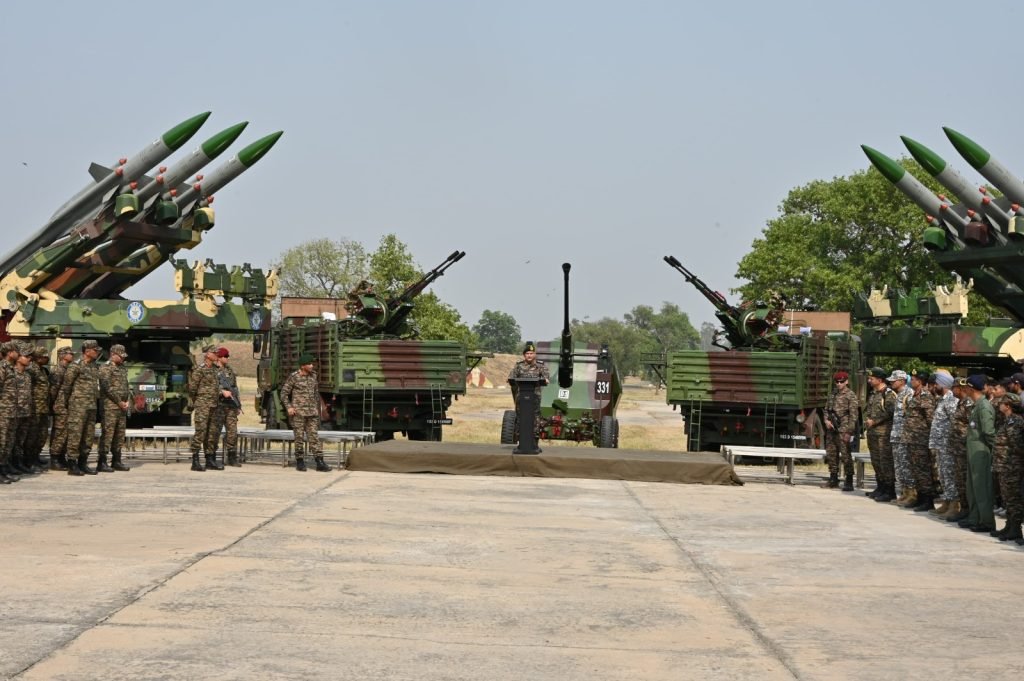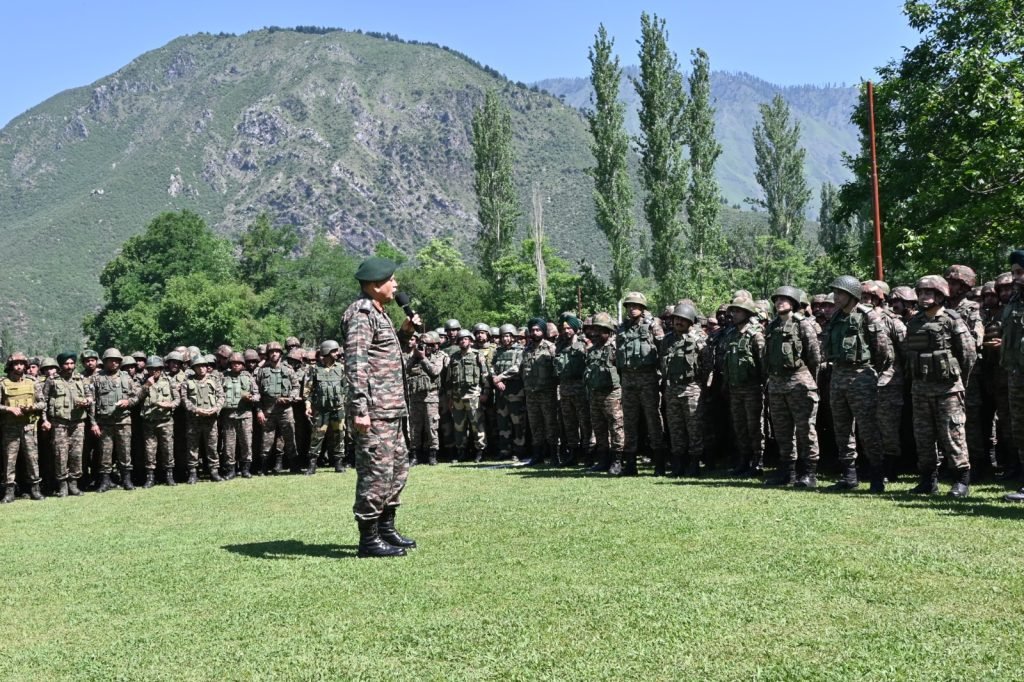In the early hours of May 7, 2025, India launched Operation Sindoor, a meticulously planned military operation targeting terrorist infrastructure in Pakistan and Pakistan-occupied Jammu and Kashmir (PoJK). This operation, named with poignant emotional resonance, was a direct response to the horrific Pahalgam terror attack on April 22, 2025, which claimed the lives of 26 civilians, mostly tourists, in Jammu and Kashmir. As tensions between India and Pakistan continue to shape regional dynamics, Operation Sindoor has been hailed as a doctrinal shift in India’s counterterrorism strategy. This blog explores the operation’s objectives, execution, outcomes, and its current status as of May 19, 2025.

The Genesis of Operation Sindoor
The Pahalgam attack, orchestrated by The Resistance Front (TRF), an offshoot of the Pakistan-based Lashkar-e-Taiba (LeT), marked one of the deadliest civilian attacks in India since the 2008 Mumbai attacks. The brutality of the assault, aimed at disrupting Kashmir’s burgeoning tourism economy, prompted a swift and resolute response from the Indian government. Prime Minister Narendra Modi, in a high-level meeting on April 29, granted the armed forces “complete operational freedom” to address the threat, setting the stage for Operation Sindoor.
The operation targeted nine high-value terrorist camps linked to LeT, Jaish-e-Mohammed (JeM), and Hizbul Mujahideen, located in strategic areas such as Bahawalpur, Muridke, Muzaffarabad, and Kotli. These sites were identified as key planning and training hubs for cross-border attacks against India. Unlike previous operations, Operation Sindoor broke conventional norms by striking deep within Pakistan’s mainland, signaling that India would no longer distinguish between terrorists and their state sponsors.
Execution: Precision and Deception
Operation Sindoor was a masterclass in military precision and strategic deception. Over two weeks, Indian intelligence agencies, supported by satellites, drones, and ground operatives, meticulously mapped the target sites. A Notice to Airmen (NOTAM) for a mock military exercise in southern Rajasthan misled Pakistani defenses, allowing Indian forces to execute the strikes under the cover of a supposed routine drill.
On May 7, between 1:05 AM and 1:30 AM IST, Indian Air Force Rafale jets, armed with SCALP cruise missiles and HAMMER laser-guided bombs, conducted a 23-minute mission that destroyed all nine targets with pinpoint accuracy. The operation exposed significant gaps in Pakistan’s air defense network, with no Indian assets lost. The Indian Navy pinned Pakistan’s naval assets in the Arabian Sea, while the Army maintained readiness along the Line of Control (LoC) and International Border (IB), showcasing seamless tri-service coordination.
India’s Akashteer Air Defence System and Integrated Air Command and Control System (IACCS) played a critical role in neutralizing Pakistani retaliatory drone and missile attacks on May 8–10. Over 50 Pakistani drones were shot down in areas like Udhampur, Samba, and Jammu, demonstrating India’s robust air defense capabilities.
Outcomes and Impact
Operation Sindoor achieved several strategic objectives:

Destruction of Terror Infrastructure: The strikes flattened nine terror camps, including JeM’s headquarters in Bahawalpur and LeT’s base in Muridke, both linked to major global attacks like 9/11 and the 2008 Mumbai attacks. Over 100 terrorists were reportedly killed, including high-value operatives and ten members of JeM chief Masood Azhar’s family.
Doctrinal Shift: Prime Minister Modi declared Operation Sindoor a “new normal” in India’s fight against terrorism, emphasizing that state-sponsored terror would face “targeted, visible, and proportional retaliation.” This policy shift lowers the threshold for military responses to terror attacks, treating them as acts of war.
Regional and Global Message: The operation de-hyphenated the Kashmir issue from India’s right to act against terrorism, framing the strikes as a legitimate response to global terror threats. It sent a clear message to Pakistan and the international community that India would not tolerate “nuclear blackmail” or cross-border terrorism.
Domestic Unity: The operation garnered widespread support across India’s political spectrum, with leaders like M.K. Stalin, Tejashwi Yadav, and Aman Arora commending the armed forces. Nationwide Tiranga Yatras, organized by the BJP, galvanized public sentiment against terrorism.
However, the operation was not without costs. Pakistani retaliatory shelling along the LoC and IB resulted in civilian casualties, including 12 civilians and one soldier in Poonch and a woman in Uri. Indian forces also lost five personnel, while Pakistan reported 40 military losses.
Current Status: A Continuing Operation
As of May 19, 2025, Operation Sindoor remains active, signaling India’s ongoing commitment to counterterrorism. A ceasefire agreement, brokered through US mediation on May 10, temporarily halted hostilities, with both nations’ Directors General of Military Operations (DGMOs) agreeing to cease land, air, and sea engagements. However, Pakistan violated the truce within hours, prompting Indian forces to respond firmly.

Sources indicate that Operation Sindoor is now a “new reality” that Pakistan and the world must accept. The Indian Air Force has confirmed that the operation is ongoing, with a detailed briefing to follow in due course. Normal diplomatic relations with Pakistan remain suspended, and India has reiterated that the Indus Waters Treaty will stay in abeyance until Pakistan unequivocally ends support for terrorism.
Tensions persist along the LoC and IB, with unexploded shells and drone sightings disrupting life in border villages. Schools and airports in northern India faced temporary closures, and the Kartarpur Corridor remains shut indefinitely. Despite these challenges, the situation is described as “tense but stable,” with India accelerating missile production to bolster its inventory.
Critical Reflections
While Operation Sindoor has been celebrated as a decisive blow to terrorism, it raises complex questions about escalation risks between two nuclear-armed neighbors. Pakistan’s claims of civilian casualties and its call for an international investigation, supported by Turkey, highlight the operation’s contentious nature. The US, UK, and China have urged restraint, with US President Donald Trump describing the conflict as a “shame” and offering mediation, though India insists on bilateral resolutions.
Critics, including opposition leaders like Supriya Shrinate, have questioned whether external pressures influenced the ceasefire, but the government maintains that Operation Sindoor was a sovereign action driven by national security. The operation’s success in avoiding civilian collateral damage in Pakistan, as confirmed by Indian officials, underscores India’s commitment to responsible warfare, though Pakistan disputes these claims.
Looking Ahead
Operation Sindoor has redefined India’s counterterrorism playbook, establishing a precedent for swift and decisive action against terror sponsors. Its ongoing status suggests that India remains vigilant, ready to respond to any further provocations. For border communities, the scars of recent hostilities linger, with daily life disrupted by the specter of conflict. Yet, the operation’s broader legacy lies in its message of resilience: India will protect its citizens at all costs, undeterred by threats or challenges.

As the world watches this volatile region, Operation Sindoor stands as a testament to India’s military prowess, strategic foresight, and unwavering resolve. Whether it ushers in a new era of deterrence or fuels further tensions remains to be seen, but for now, it is a defining chapter in India’s fight for security and justice.



Comments are closed.